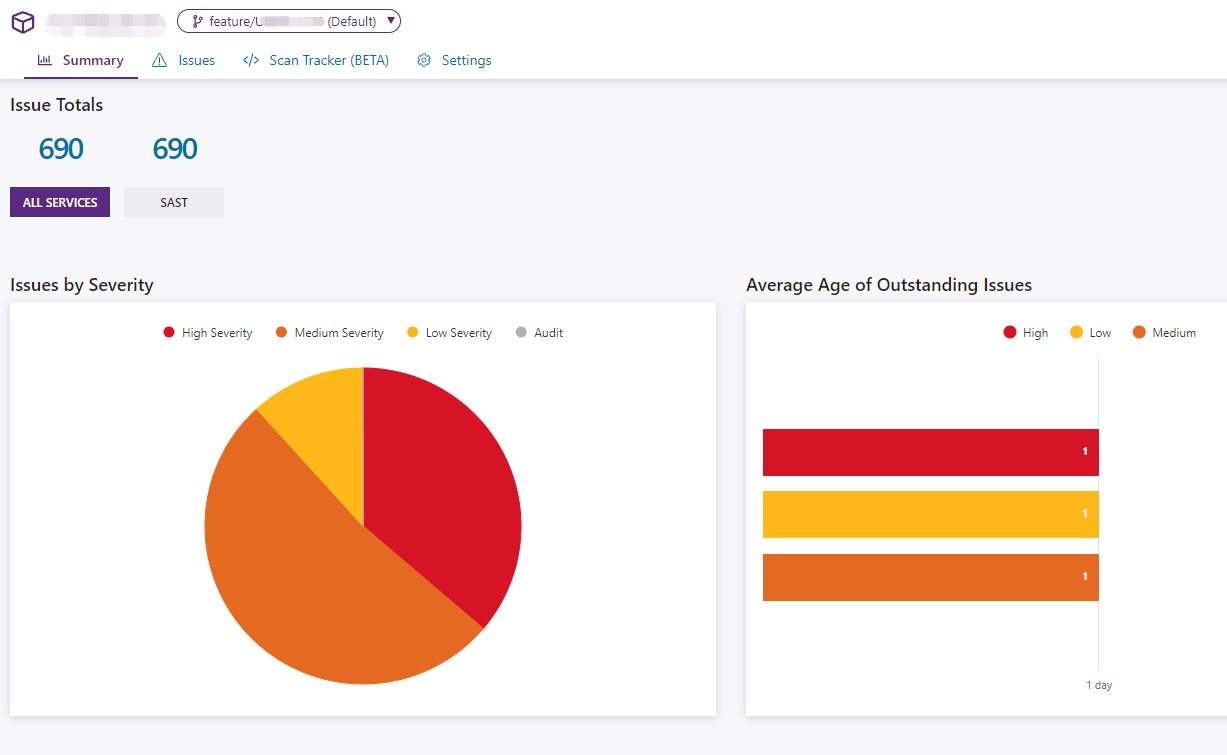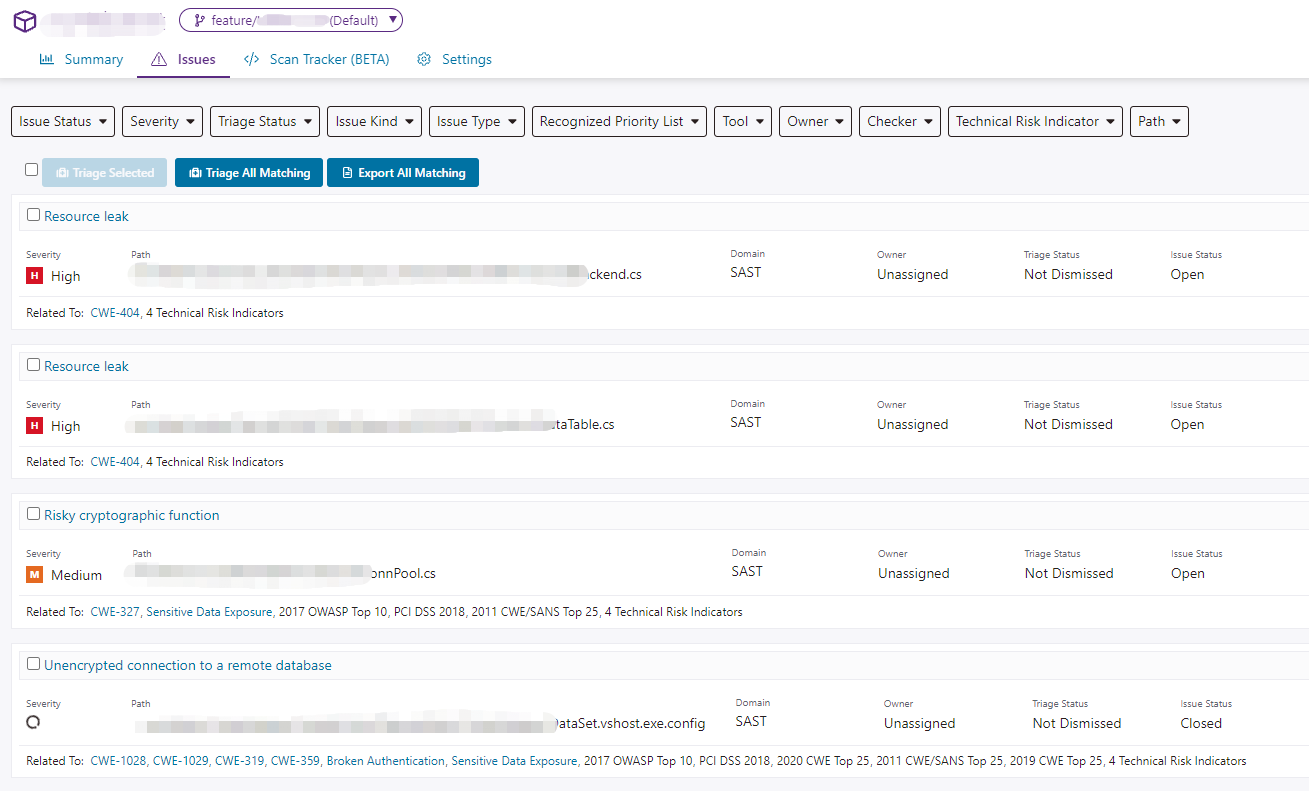This might be the most detailed article about Polaris available in Chinese.
What is Polaris?#
Polaris - A SaaS platform for managed Static Application Security Testing (SAST) tools. It’s a web site used to categorize and remediate vulnerabilities and run reports. SAST - A tool that analyzes source code or build artifacts to find security vulnerabilities. It’s a crucial step in ensuring security throughout the Software Development Life Cycle (SDLC). Coverity - Coverity is the original Static Application Security Testing (SAST) tool provided by Synopsys. Polaris is the SaaS version of Coverity. Synopsys - The company that develops Polaris and other software scanning tools, such as BlackDuck.
Which Languages Does Polaris Support?#
C/C++
C#
Java
JavaScript
TypeScript
PHP
Python
Fortran
Swift
...and more
Polaris SaaS Platform#
Usually, if your organization has introduced the Polaris SaaS service, you will have the following URL available: https://organization.polaris.synopsys.com
After logging in, you can create projects for your Git repositories.
Recommendation: Name the project the same as the Git repository.
How Does Polaris Perform Vulnerability Scanning?#
Polaris Installation#
Before performing a Polaris scan, you need to download and install polaris.
If your Polaris server URL is: POLARIS_SERVER_URL=https://organization.polaris.synopsys.com
The download link is: $POLARIS_SERVER_URL/api/tools/polaris_cli-linux64.zip
Then unzip the downloaded polaris_cli-linux64.zip to your local machine and add its bin directory to your PATH.
Polaris YAML Configuration File#
Before scanning, you need to create a YAML file for your project. The default configuration file name is polaris.yml, located in the project root directory. If you want to specify a different configuration file name, you can use the -c option in the polaris command.
Run polaris setup in the project root directory to generate a generic polaris.yml file.
Run polaris configure to verify that your file is syntactically correct and that polaris has no problems.
Capture - Capture#
A YAML configuration file can contain three types of Capture:
- Build - Run build commands and then analyze the results.
- Filesystem - For interpreted languages, provide the project type and a list of extensions to analyze.
- Buildless - For some languages that use dependency managers, such as Maven.
| Languages | Build Options |
|---|---|
| C, C++, ObjectiveC, Objective C++,Go, Scala, Swift | Use Build capture |
| PHP, Python, Ruby | Use Buildless or Filesystem capture |
| C#, Visual Basic. | Use Build capture for more accurate results; use Buildless capture for simplicity |
| Java | Use Build capture for more accurate results; use Buildless capture for simplicity |
| JavaScript,TypeScript | Use Filesystem capture; use Buildless capture for simplicity |
Analyze - Analyze#
If you are scanning C/C++ code, you should include this analysis section to make full use of Polaris’s scanning capabilities:
analyze:
mode: central
coverity:
cov-analyze: ["--security","--concurrency"]
Polaris YAML Example Files#
Example 1: A C/C++ project
version: "1"
project:
name: test-cplus-demo
branch: ${scm.git.branch}
revision:
name: ${scm.git.commit}
date: ${scm.git.commit.date}
capture:
build:
cleanCommands:
- shell: [make, -f, GNUmakefile, clean]
buildCommands:
- shell: [make, -f, GNUmakefile]
analyze:
mode: central
install:
coverity:
version: default
serverUrl: https://organization.polaris.synopsys.com
Example 2: A Java project
version: "1"
project:
name: test-java-demo
branch: ${scm.git.branch}
revision:
name: ${scm.git.commit}
date: ${scm.git.commit.date}
capture:
build:
cleanCommands:
- shell: [gradle, -b, build.gradle, --no-daemon, clean]
buildCommands:
- shell: [gradle, -b, build.gradle, --no-daemon, shadowJar]
fileSystem:
ears:
extensions: [ear]
files:
- directory: ${project.projectDir}
java:
files:
- directory: ${project.projectDir}
javascript:
files:
- directory: client-vscode
- excludeRegex: node_modules|bower_components|vendor
python:
files:
- directory: ${project.projectDir}
wars:
extensions: [war]
files:
- directory: ${project.projectDir}
analyze:
mode: central
install:
coverity:
version: default
serverUrl: https://organization.polaris.synopsys.com
Example 3: A CSharp project
version: "1"
project:
name: test-ssharp-demo
branch: ${scm.git.branch}
revision:
name: ${scm.git.commit}
date: ${scm.git.commit.date}
capture:
build:
buildCommands:
# If the build process is complex, you can write a script and then call it.
- shell: ['script\polaris.bat']
# Skip some files you don't want to scan.
skipFiles:
- "*.java"
- "*.text"
- "*.js"
analyze:
mode: central
install:
coverity:
version: default
serverUrl: https://organization.polaris.synopsys.com
For more details on writing polaris.yml, please refer to the official Polaris documentation: https://sig-docs.synopsys.com/polaris/topics/c_conf-overview.html
Executing Analysis#
Use the following command to perform Polaris analysis:
polaris -c polaris.yml analyze -w --coverity-ignore-capture-failure
--coverity-ignore-capture-failure - Ignore Coverity capture failures. Run polaris help analyze to see more information about analysis commands.
Polaris Analysis Results#
If the Polaris analysis is successful, you will see a success message in the console as follows:
[INFO] [1zb99xsu] Coverity job completed successfully!
[INFO] [1zb99xsu] Coverity - analyze phase took 4m 36.526s.
Analysis Completed.
Coverity analysis
{
"JobId": "mlkik4esb961p0dtq8i6m7pm14",
"Status": "Success"
}
Job issue summary
{
"IssuesBySeverity": {
"Critical": 0,
"High": 250,
"Medium": 359,
"Low": 81
},
"Total": 690,
"NewIssues": 0,
"ClosedIssues": 0,
"SummaryUrl": "https://organization.polaris.synopsys.com/projects/bb079756-194e-4645-9121-5131493a0c93/branches/d567c376-4d5d-4941-8733-aa27bb2f5f5b"
}
This shows a total of 690 vulnerabilities found, and how many of each severity level. Specific vulnerability information needs to be viewed by logging into the Polaris SaaS platform.
Clicking the link in SummaryUrl will directly jump to the Polaris scan results for that project.



